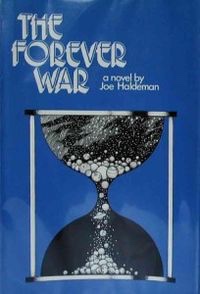
Patrick Keefe, “Say Nothing: A True Story of Murder and Memory in Northern Ireland” (2019) – Is it fair to say this book gives the Troubles the true crime treatment? Yes and no. From the cheap seats, it looks to me that true crime has been upscaled some in recent years- going from supermarket paperbacks to high production value podcasts and nice hardcovers like my copy of “Say Nothing.” How much the works themselves have changed with this gentrification is for somebody who knows more to say. But it seems a lot of elements remain the same- the titillating intimacy of certain types of crime, the pseudo-literary psychologizing, using crimes to help define a given place and vice versa. Often enough, true crime attempts to hook the reader by presenting a new version of the crime at odds with the official story.
You get all of the above in “Say Nothing.” In many respects, the war in the North of Ireland is perfectly suited for this sort of treatment. To be way cynical for a minute, it presumably helps that it took place among white people who spoke English- with sexy accents even! One wonders how well a similar story set in that other capital of late twentieth century urban guerrilla mayhem, Beirut, would sell stateside… More generously to both author and readership, this long, slow, grinding war took place in a small place, among relatively few people- Belfast had (and has) something like three hundred thousand inhabitants (Beirut is roughly the same, fwiw). The action of the war involved heavy use of retail terror- acts of violence targeting individuals but directed at whole communities. This lends itself to the sort of individuated reconstruction of crimes and the broken lives around them that true crime thrives on. More systematic work of the same kind — the Phoenix Program stalking and killing National Liberation Front infrastructure, or for that matter, NLF guerrillas assassinating enemy officials — just don’t have the same kind of pathos.
I’m probably making it sound like I don’t like this book or have a lot of big criticisms of it. Wrong on both counts! I think part of me is interested in the literature on insurgency and counterinsurgency so am looking at it from that angle… AND the book has been so talked up it’s a tempting target…
But on its own, “Say Nothing” is a quite well told story of the whole universe of violence, complicity, and silence surrounding the murder of Jean McConville, a mother of ten disappeared by the IRA in 1972. To tell the story, Keefe tells something like the whole story of the Troubles, the early parts of which include the murder itself and the latter parts the extended coverup and seeming impossibility of getting justice for McConville’s slaying, or even knowing what justice would look like.
The bare facts are unspooled across hundreds of pages of background about the Troubles (which basically plays fair pool, from what I can tell, though like everyone else I have my own biases- against the British imperial state and in favor of a united socialist Irish republic), the lives of McConville and her kids (generally ranging from gloomy to fucked), details about the peace process, eventually getting into how Keefe got the sources, and so on. These bare facts appear to be this: the Belfast Brigade of the IRA got it in its head that Jean McConville was an informant. IRA fighters abducted her from her apartment and no one saw her alive again. In all likelihood, she was shot by a team composed of Brendan “Dark” Hughes, Dolours Price, and Marian Price. All of them either died before they could be charged with the crime or were not charged. Also not charged was Gerry Adams, president of Sinn Fein, one of the architects of peace in the North, whose whole post-guerrilla career rode on him denying what everyone knows- that he was an IRA commander and likely green-lit McConville.
The question of whether or not McConville was an informer is probably the least interesting question, on its own- the evidence isn’t strong but the British peppered Belfast so thickly with informants as to justify paranoia. What makes it interesting to me is the dynamics of ingroup suspicion. The IRA and the DSA are pretty dissimilar in most respects, but the social dynamics of small groups, especially of radicals, seem familiar. Someone suggested McConville was an informer; details, like an unlikely handheld radio nobody ever saw, are elaborated (passive voice intentional); soon it just becomes operating common sense. How many times have we seen that happen with one suggestion or another in radical circles? Everyone is too busy to chase down and confirm or disconfirm every rumor, and there were a lot of informants (and are a lot of harassers/careerists/entryists/whatever we’re on the lookout for now). It doesn’t help that the people most likely to want to sort this kind of thing out are often the last people you want to do it- as in the case of the IRA’s “Nutting Squad” (heh, heh), which was run by someone who was both a psychopath and an informant himself… he disappeared into something like witness protection, shielded by the Brits to this day, by the by.
Anyway, personal relevance aside, Keefe does an impressive job of marshaling a wide array of information into a package of elegant tale-telling. We get the full story of McConville, her family, those accused of killing her. Boston College plays an important and ignominious supporting role- they sponsored a project to collect paramilitary recollections under promises of iron-clad secrecy but with no real protections once the British police came knocking. Another associate from school days, British counterinsurgency guru Frank Kitson, shows up, (re)-introducing the death squad to Ireland, and it’s always good to see him, as in “good to know his proximate location at any given time.”
While Keefe delivers the goods — murder, pathos, some shoeleather detective work putting together who did the deed — he also makes a point through the way the book is constructed. In a situation like the North of Ireland, context is everything. You can’t understand one of the killings, in any of its particulars, without trying to understand that vast context. He even does a good job of getting across the complexities whilst avoiding pathologizing the Irish as possessing some special psychosis for murderous grudges. That’s more than you can expect from a book on the Troubles! All told, fine work. ****’









